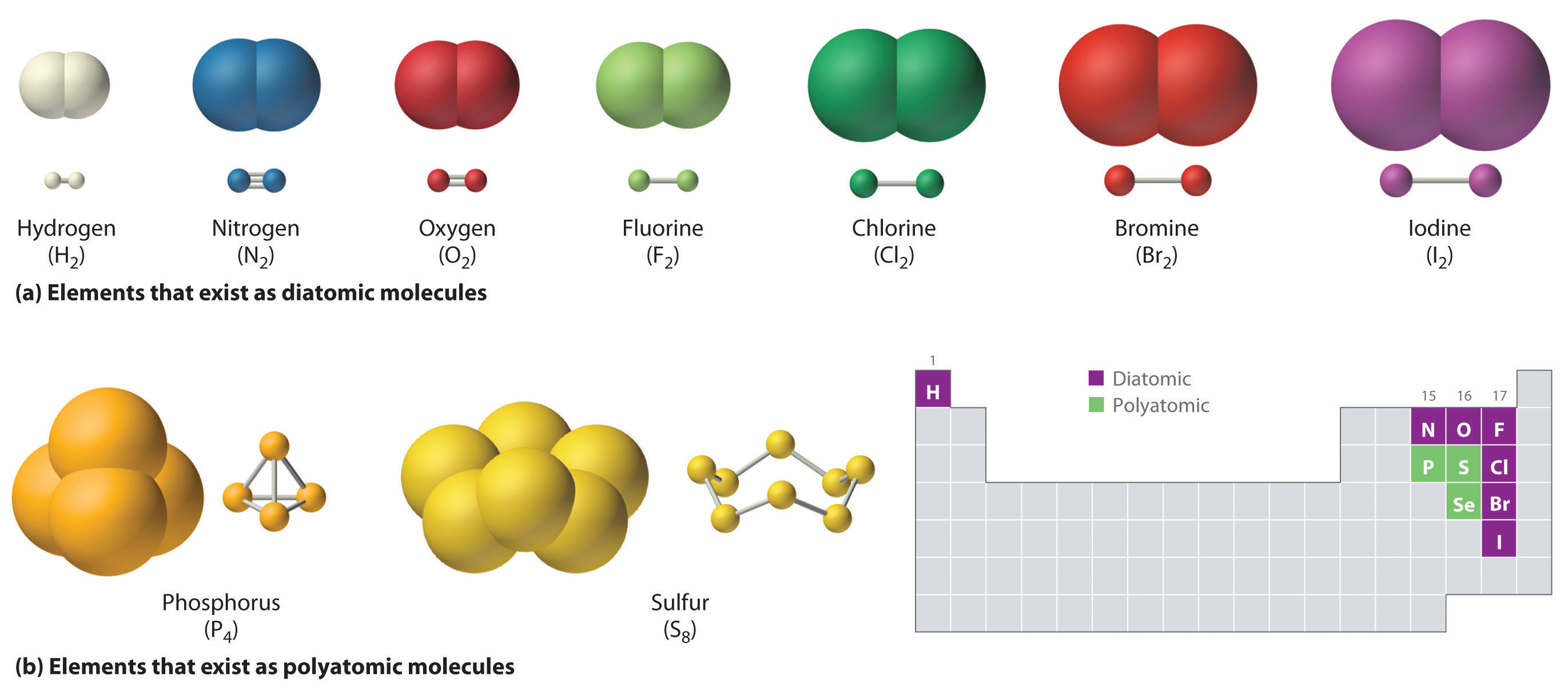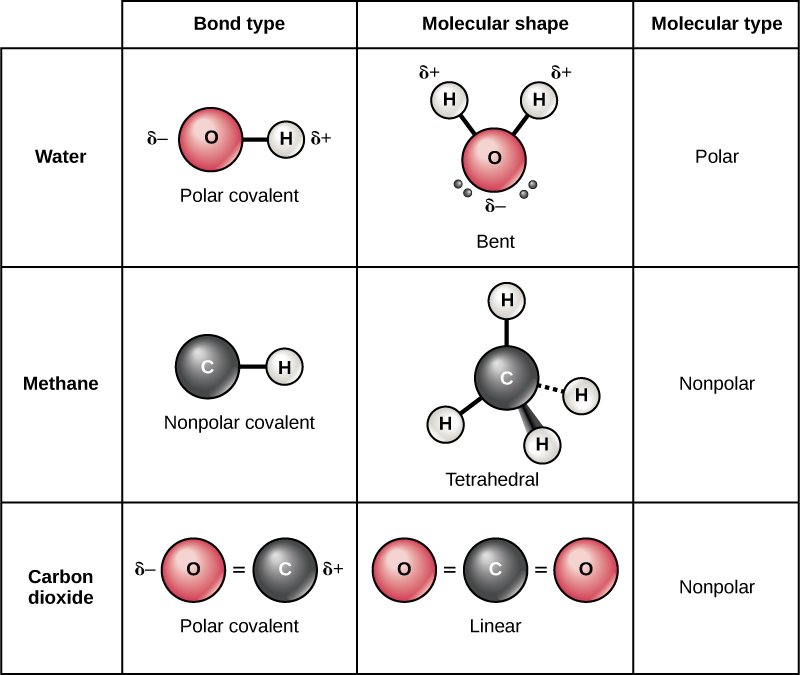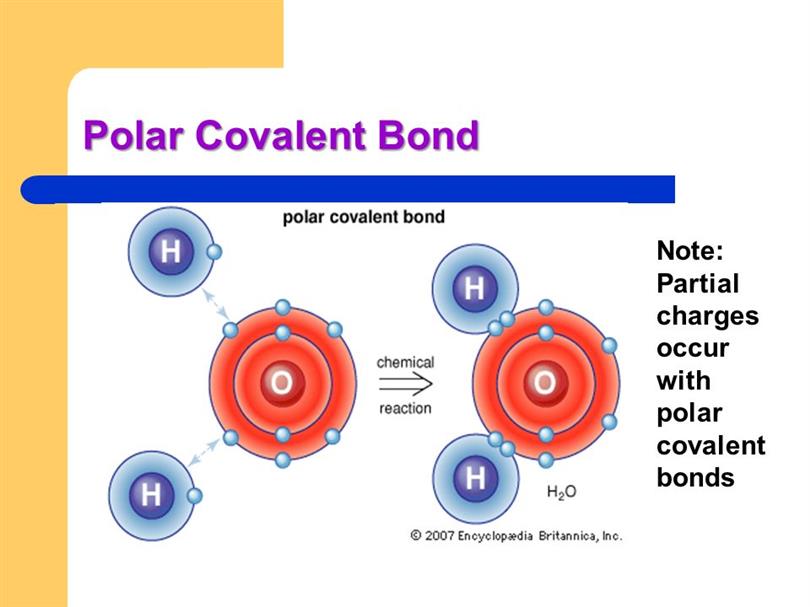Which Combination Of Atoms Can Form A Polar Covalent Bond
Which Combination Of Atoms Can Form A Polar Covalent Bond - Web this creates a spectrum of polarity, with ionic (polar) at one extreme, covalent (nonpolar) at another, and polar covalent in the middle. Two atoms with equal electronegativity will. Which molecule contains a non polar covalent bond? In a covalent bond, the stability of the bond comes from the shared electrostatic attraction between the two. The polarity of a bond depends on the electronegativities of the bonded atoms. Web the acid that forms the more stable conjugate base will be the stronger acid. A) h and br explanation: Web a covalent bond is formed when two atoms share electron pairs. Web covalent bonds are also affected by the electronegativity of the connected atoms which determines the chemical polarity of the bond. Lewis dot structures are one way to represent how atoms form covalent bonds.
The polarity of a bond depends on the electronegativities of the bonded atoms. Web bonds between carbon and other elements such as oxygen and nitrogen are polar. Web covalent bonds in which the sharing of the electron pair is unequal, with the electrons spending more time around the more nonmetallic atom, are called polar covalent. Web which combination of atoms can form a polar covalent bond? Web some compounds contain both covalent and ionic bonds. Web what kind of bond is formed when two atoms share electrons to form a molecule? A) h and br explanation: A h and h b h and f c n and n d na and f medium solution verified by toppr correct option is b) answer= h. Which type of bond is present. The common factors that affect the conjugate base's stability are 1) the size and.
In a covalent bond, the stability of the bond comes from the shared electrostatic attraction between the two. Lewis dot structures are one way to represent how atoms form covalent bonds. Web which combination of atoms can form a polar covalent bond? Web 1)molecular compounds where in atoms are joined by covalent bonds. Only h and br form polar covalent bond. A) h and br explanation: Web some compounds contain both covalent and ionic bonds. Web which combination of atoms can form a polar covalent bond? The polarity of a bond depends on the electronegativities of the bonded atoms. The common factors that affect the conjugate base's stability are 1) the size and.
Ch4 Polar Or Nonpolar Covalent Bond Which statement explains why a
Web 1)molecular compounds where in atoms are joined by covalent bonds. Web it takes two electrons to make a covalent bond, one from each bonding atom. Web the acid that forms the more stable conjugate base will be the stronger acid. A h and h b h and f c n and n d na and f medium solution verified.
Building the World Be Prepared! Everything you should know for 1st
2) ionic compounds where atoms are joined by ionic bond. In a covalent bond, the stability of the bond comes from the shared electrostatic attraction between the two. A) hand br ob) hand h c) na and br od) n. A h and h b h and f c n and n d na and f medium solution verified by.
2.2 Chemical Bonds Anatomy & Physiology
The atoms in this bond are xenon (electronegativity 2.6) and fluoride (electronegativity 4.0). Web advanced physics advanced physics questions and answers which combination of atoms can form a polar covalent bond? Web some compounds contain both covalent and ionic bonds. This is due to one of the elements having a higher electronegativity than the. Web polar covalent bonds are usually.
Chapter 5.6 Properties of Polar Covalent Bonds Chemistry LibreTexts
A) hand br ob) hand h c) na and br od) n. The atoms in this bond are xenon (electronegativity 2.6) and fluoride (electronegativity 4.0). Web a covalent bond is formed when two atoms share electron pairs. Web what kind of bond is formed when two atoms share electrons to form a molecule? Web polar covalent bonds are usually formed.
What Is a Polar Bond? Definition and Examples
Two atoms with equal electronegativity will. Web 1)molecular compounds where in atoms are joined by covalent bonds. Web this creates a spectrum of polarity, with ionic (polar) at one extreme, covalent (nonpolar) at another, and polar covalent in the middle. In a covalent bond, the stability of the bond comes from the shared electrostatic attraction between the two. Web covalent.
CH150 Chapter 4 Covalent Bonds and Molecular Compounds Chemistry
Two atoms with equal electronegativity will. A) h and br explanation: In a covalent bond, the stability of the bond comes from the shared electrostatic attraction between the two. Web some compounds contain both covalent and ionic bonds. Web bonds between carbon and other elements such as oxygen and nitrogen are polar.
Polar Covalent Bond Definitions, Types and Examples
This is due to one of the elements having a higher electronegativity than the. In a covalent bond, the stability of the bond comes from the shared electrostatic attraction between the two. Web polar covalent bonds are usually formed between two nonmetal atoms having different electronegativities. Web non polar covalent bond is defined as type of chemical bond with equal.
Covalent Bonds Biology for NonMajors I
Only h and br form polar covalent bond. Web a polar covalent bond is a bond formed when a shared pair of electrons are not shared equally. Web advanced physics advanced physics questions and answers which combination of atoms can form a polar covalent bond? Web non polar covalent bond is defined as type of chemical bond with equal sharing.
How does a polar bond differ from a covalent bond
Let us consider a and b in which them is electronegativity difference. Web advanced physics advanced physics questions and answers which combination of atoms can form a polar covalent bond? A h and h b h and f c n and n d na and f medium solution verified by toppr correct option is b) answer= h. A) hand br.
This figure shows the structure of a water molecule. The top panel
Web a covalent bond is formed when two atoms share electron pairs. Web advanced physics advanced physics questions and answers which combination of atoms can form a polar covalent bond? This is due to one of the elements having a higher electronegativity than the. Web the acid that forms the more stable conjugate base will be the stronger acid. A).
Web This Creates A Spectrum Of Polarity, With Ionic (Polar) At One Extreme, Covalent (Nonpolar) At Another, And Polar Covalent In The Middle.
Web covalent bonds in which the sharing of the electron pair is unequal, with the electrons spending more time around the more nonmetallic atom, are called polar covalent. Web bonds between carbon and other elements such as oxygen and nitrogen are polar. Which type of bond is present. The common factors that affect the conjugate base's stability are 1) the size and.
Web 1)Molecular Compounds Where In Atoms Are Joined By Covalent Bonds.
Web polar covalent bonds are usually formed between two nonmetal atoms having different electronegativities. Web covalent bonds are also affected by the electronegativity of the connected atoms which determines the chemical polarity of the bond. In a covalent bond, the stability of the bond comes from the shared electrostatic attraction between the two. The polarity of a bond depends on the electronegativities of the bonded atoms.
Web Some Compounds Contain Both Covalent And Ionic Bonds.
Web which combination of atoms can form a polar covalent bond? A) hand br ob) hand h c) na and br od) n. 2) ionic compounds where atoms are joined by ionic bond. Let us consider a and b in which them is electronegativity difference.
Which Molecule Contains A Non Polar Covalent Bond?
The atoms in this bond are xenon (electronegativity 2.6) and fluoride (electronegativity 4.0). Web advanced physics advanced physics questions and answers which combination of atoms can form a polar covalent bond? Two atoms with equal electronegativity will. Only h and br form polar covalent bond.

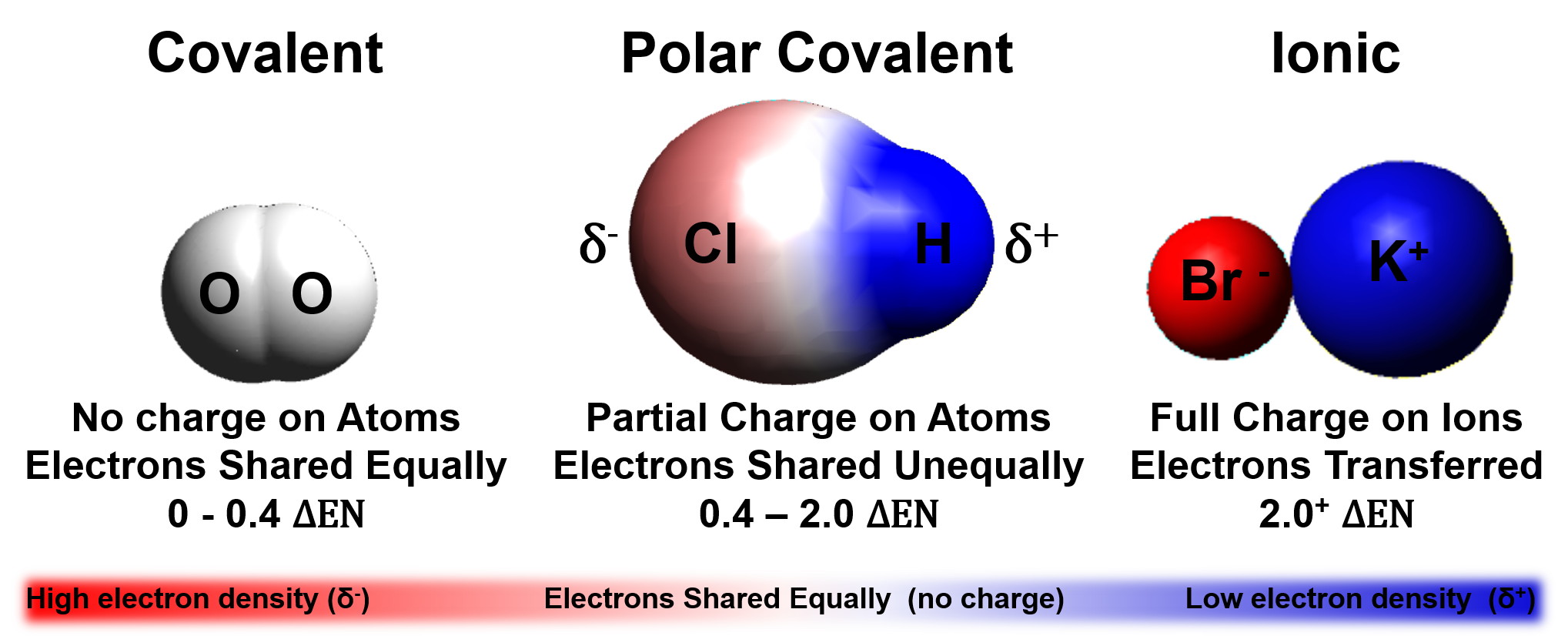

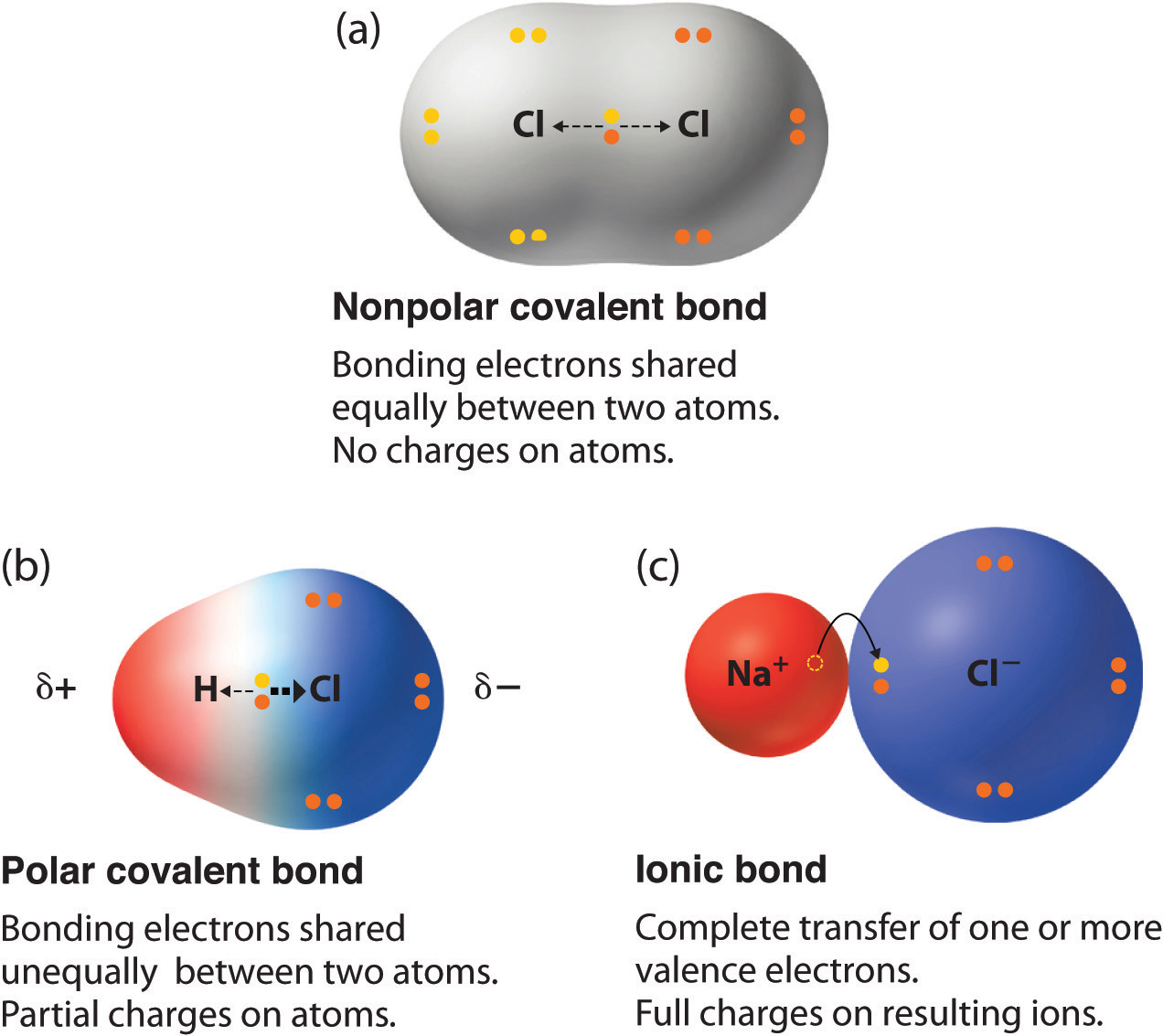
/PolarConvalentBond-58a715be3df78c345b77b57d.jpg)
